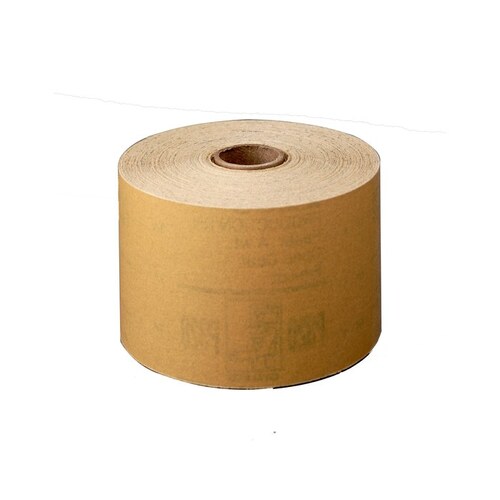
Roll over image to zoom in
Product Features
Product Overview
Related Videos
Reviews
Questions & Answers
3M 02590 216U Series Abrasive Sheet Roll, 2-3/4 in W x 45 yd L, P400 Grit
Item #: 02590 by 3M
UPC #: 051131025905
30 Days Easy Return. We are the largest supplier of the most adaptable, personalized hardware in the industry. We work hard to ensure you're satisfied with our products.
- Adhesive backed sheet is customizable to blocks, file shoes or pads, helping reduce waste
- A weight paper backing is ideal for featheredging or primer sanding
- Aluminum oxide mineral provides fast cut and long abrasive life
- Stikit™ sheets are easy to attach and remove
- Anti-loading coating prevents dust and debris from clogging the cutting surface
Color/Finish
Gold
Attachment Type
PSA
MFR Model
02590
Backing Material
Paper
Part no.
2590
Grade
Extra Fine
Abrasive Material
Aluminum Oxide
Application
For featheredging, filler shaping, fine featheredge, paint defect removal, paint finishing, paint preparation, primer sanding, rough featheredge, sanding
Standard/Approvals
EU 65 | OSHA 29 CFR 1910.1200 | REACH 1907 | RoHS Compliant
Width (in)
2-3/4
Grit
P400
Length (yd)
45
Overall Length
1620"
Overall Width
2 3/4"
Trade Name
Stikit
Backing Weight
A
Product Form
Roll
Color
Yellow
Alternative UPC
60455035570
3M Stikit coated sanding roll uses aluminum oxide as the abrasive material. 3M incorporates this aluminum oxide material into the sanding roll forming a grit of P400. The PSA attachment allows for easy mounting to the tool or pad. The sanding roll has a width of 2 3/4 in and length of 45 yd. This item is on a paper backing, A weight.
Specifications:
Abrasive Type: Coated
Specification parameters description:
Backing Weight:
Paper and cloth have a lettering scale for backing weight that measures strength of the material onto which the abrasive is mounted. Paper uses the letters A-F, where A is a lighter weight and most flexible and F represents a rigid, heavier backing. Lighter backings are typically paired with finer abrasive grits, suitable for blending and finishing. Coarser grits used for deburring and stock removal rely on a heavier backing. Cloth uses a lettering system of J, X, and Y for backing weight. J weight (jeans) is the lightest and most flexible, X weight (drills) is more durable and recommended for medium duty work, and Y weight is the toughest and least flexible. Fiber backings are made from chemically-impregnated paper to form a very hard, strong backing material. Fiber is used primarily for sanding discs. Polyester film backing provides high strength with a very thin backing and is used for very fine grits. It is more tear resistant than paper backing and is also waterproof.
Grade:
Grade is a measurement of the size of abrasive particles embedded in coated abrasives. It is a more general measurement of the level of precision, and corresponds roughly to grit. A smaller grit number means larger particles and a coarser grade, while high number grits are used for finer work.
Grit:
Grit is a measurement of the size of abrasive particles embedded in coated abrasives. The most common standards for grit size are the United States CAMI (Coated Abrasive Manufacturers Institute) and the European FEPA (Federation of European Producers of Abrasives). A smaller grit number means larger particles and a coarser grade, while high number grits are used for finer work. Grit is generally a unitless measure but is sometimes measured in microns.